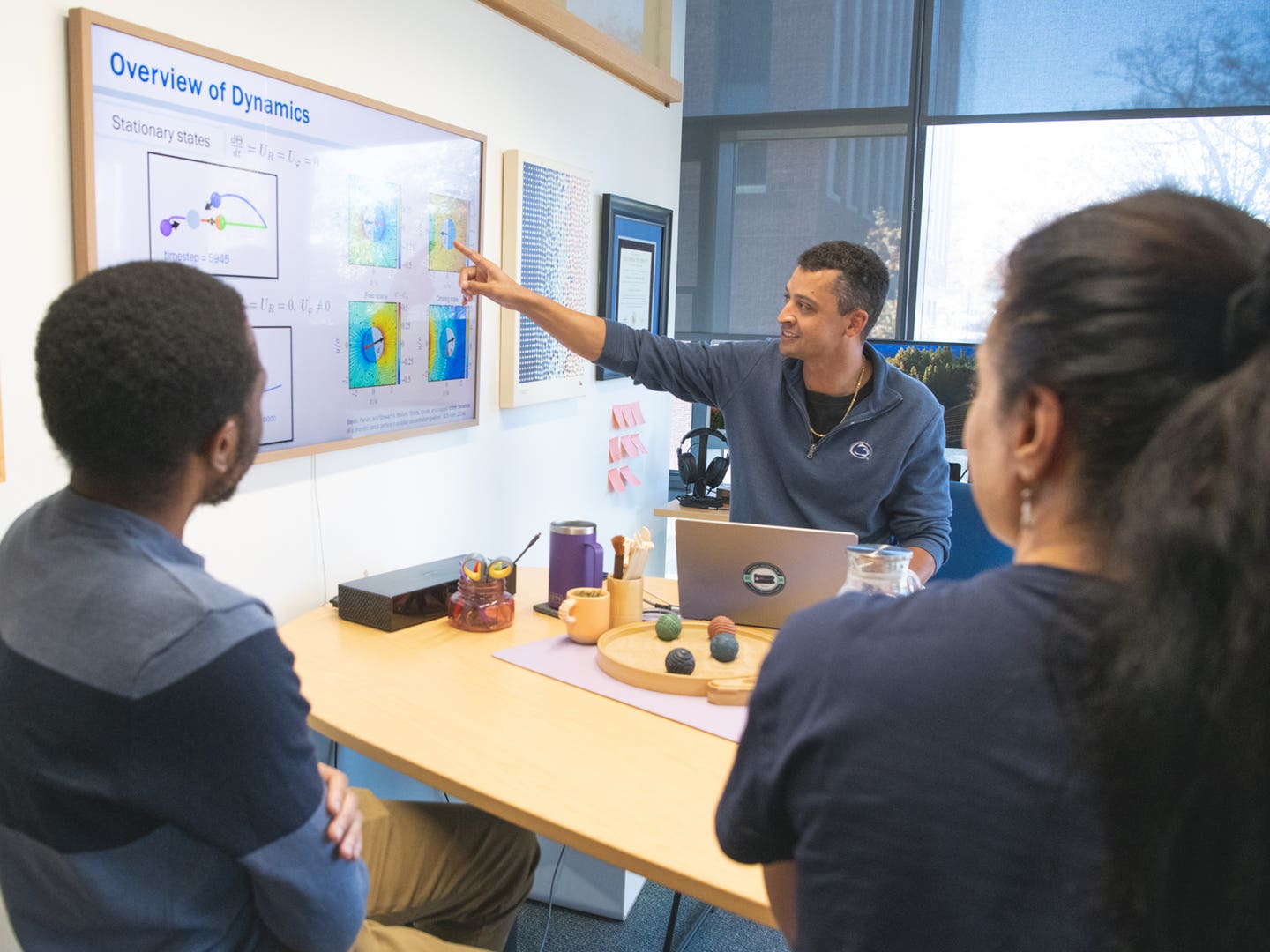Eye movements reveal how children and adults read and process information, study finds
Skilled readers are known to extract information not only from the word they are looking at but from the one directly following it.

[May 27, 2023: Ksenia Bregadze, National Research University Higher School of Economics]
Skies of Manawak: a screenshot of the action-like, flying mini-game. (CREDIT: UNIGE / D.Bavelier)
Skilled readers are known to extract information not only from the word they are looking at but from the one directly following it. This phenomenon is called pre-processing.
Researchers from the HSE Centre for Language and Brain analysed the eye movements of primary school children and adults during silent reading and found both groups to rely on orthographic, rather than phonological, information in pre-processing an upcoming word. The study has been published in the Journal of Experimental Child Psychology.
Reading is one of the most sophisticated intellectual processes. During reading, the human brain processes orthographic (letter images and word length), phonological (sounds) and morphological (units of meaning and grammatical gender) types of information.
Additionally, the anatomy of the human eye, in particular the area around the central fovea (parafovea), makes it possible to extract visual information during reading from an upcoming word that is currently located in the parafoveal region. This ability, known as parafoveal processing, makes reading faster, as readers can recognise words more easily after extracting information about them in their peripheral vision.
Related News
Studies in other languages suggest that while readers can extract both orthographic and phonological information about the next word parafoveally, the type of information the reader will use for recognition depends on their developmental age and the orthography of the language.
As such, studies in German demonstrate a greater reliance on phonological information in children, as opposed to adults who tend to rely on orthographic information more. In contrast, English-speaking readers have been found to pre-process both types of information regardless of their age.
Researchers of the HSE Centre for Language and Brain have examined parafoveal processing in Russian-speaking readers to determine which type of information, orthographic or phonological, they tend to extract during parafoveal pre-processing.
The study participants included 65 young adults, 56 children in the second grade, and 48 children in the fourth grade. The participants were asked to read 60 sentences silently from a computer screen while their eye movements were recorded by a camera. Each sentence contained a phrase consisting of an adjective and a five-letter noun.
Unknown to the study participants, there was an invisible boundary between the adjective and the noun following it. While the readers' gaze was fixated to the left of the boundary—with the noun being in the parafoveal region—the letter combination displayed on the screen was slightly different from the original noun. Once the reader's gaze crossed the invisible boundary, the word on the screen changed to the correct one before the reader could notice it.
The objective was to determine whether the readers relied on phonology or orthography in pre-processing. The researchers tested the role of phonological information by replacing the original noun (pirog) [which means ‘pie’ in Russian] with a pseudohomophone, ie a non-word that sounds exactly alike (pirok), and a control one that sounds different (pirob).
The role of orthographic information in pre-processing was tested by replacing the original word with a non-word in which the same letters were rearranged (priog) or with a control in which the letters were different (pleog).
Thus, while a study participant was reading the sentence 'There was a sweet raspberry pirok on the kitchen table', the moment they fixated their gaze on the non-word pirok, it was replaced by the correct pirog.
Next, the researchers built several models to assess the effects of replacing words with non-words. Generally, all participants—children and adults—were found to rely on orthographic rather than phonological information. Both children and adults spent approximately the same time pre-processing the pseudohomophones pirok and pirob, but pre-processing the control non-word pleog took them much longer than the non-word with rearranged letters priog.
According to the study authors, this finding suggests that in pre-processing words, Russian readers do not rely on how a word is pronounced, and while they are sensitive to letter identity (ie whether the right letters are used in a word), the exact order of letters does not matter much to them.
'We had expected to see second-graders who only recently learned to read to extract information parafoveally on how the next word sounds. But this was not the case. At the age of eight, children, just like adults, rely during pre-processing on the word's spelling. They find it easier to recognise a word with letters in the wrong order than a word that sounds similar to the original one.' - Vladislava Staroverova, Study author, research assistant at the Centre for Language and Brain.
'Although inconsistency with the findings of similar studies for other languages may be due to the specific features of Russian orthography or the design of the study, it is also possible that Russian-speaking second-graders have already developed sufficient reading skills to use 'adult' processing mechanisms.'- Olga Dragoy, Co-author of the paper, director of the Centre for Language and Brain.
The study findings provide a helpful insight into how children develop reading skills and could be used to design tools for addressing reading difficulties.
For more science and technology stories check out our New Discoveries section at The Brighter Side of News.
Note: Materials provided above by National Research University Higher School of Economics. Content may be edited for style and length.
Like these kind of feel good stories? Get the Brighter Side of News' newsletter.
Joseph Shavit
Head Science News Writer | Communicating Innovation & Discovery
Based in Los Angeles, Joseph Shavit is an accomplished science journalist, head science news writer and co-founder at The Brighter Side of News, where he translates cutting-edge discoveries into compelling stories for a broad audience. With a strong background spanning science, business, product management, media leadership, and entrepreneurship, Joseph brings a unique perspective to science communication. His expertise allows him to uncover the intersection of technological advancements and market potential, shedding light on how groundbreaking research evolves into transformative products and industries.



